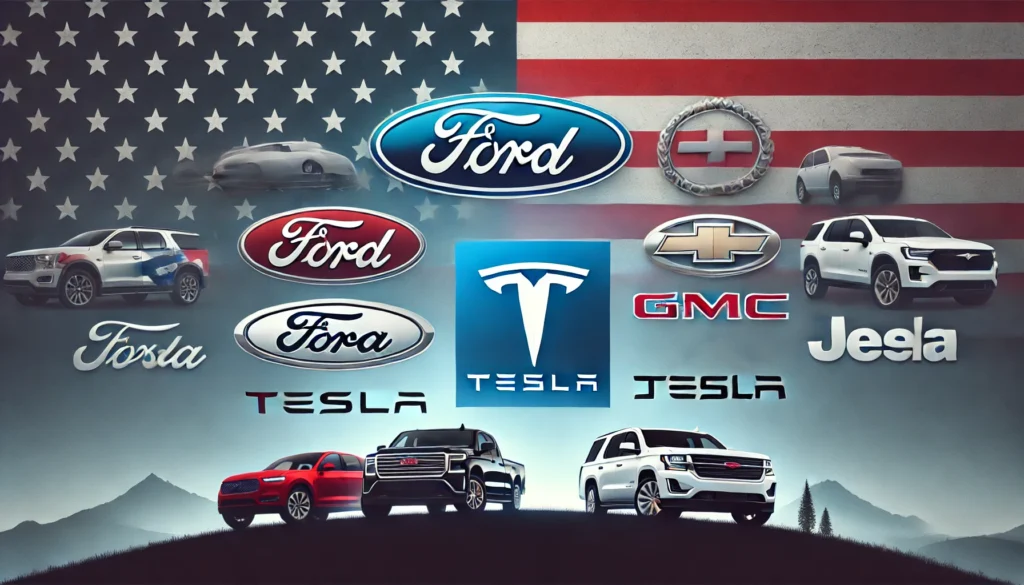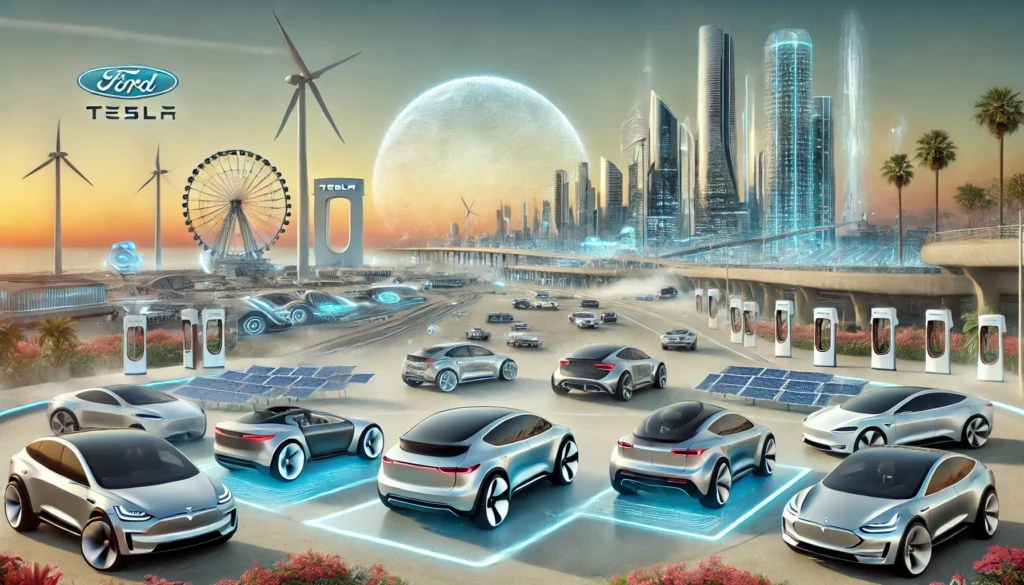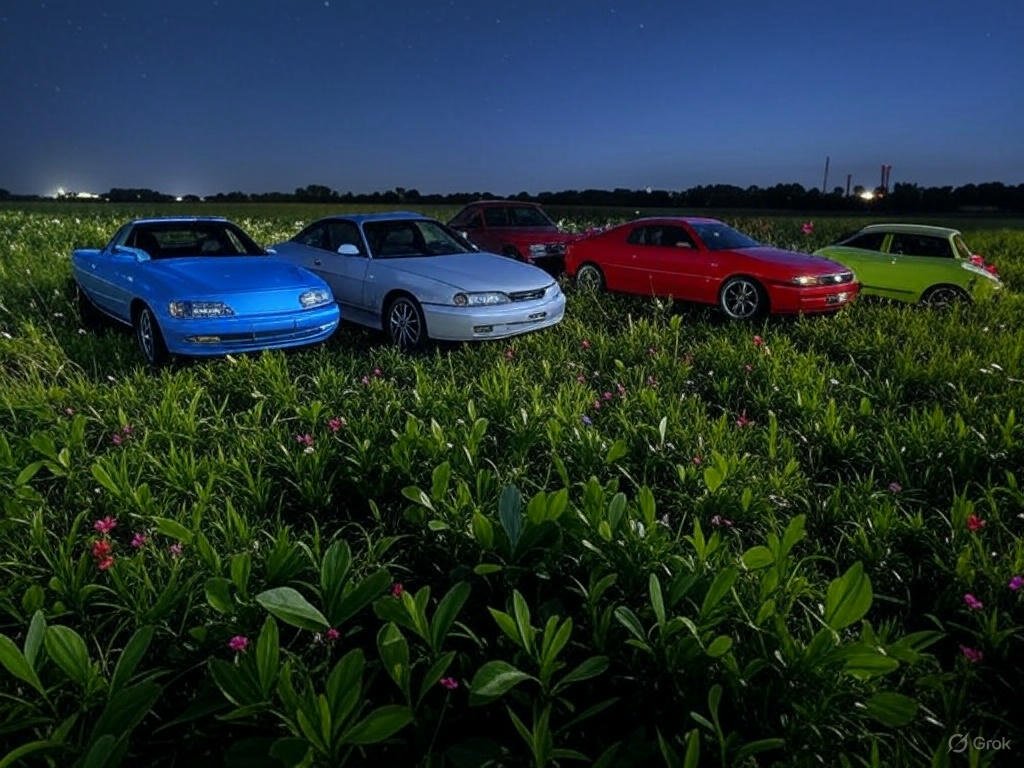American-made cars have been rolling off assembly lines and into driveways for over a century, carrying a legacy of grit, ingenuity, and national pride. This guide is your roadmap to understanding these vehicles—where they’re built, who’s making them, and why they’re a big deal. We’ll start with a stroll through their history, then spotlight the brands keeping the tradition alive, from old-school giants to electric upstarts. You’ll see where these cars come together, how they keep folks working, and what’s on the horizon with trends like electric power and smart tech. Whether you’re a gear head or just wondering what “Made in the USA” really means for cars, this article breaks it all down like a conversation over a cup of coffee—simple, clear, and packed with the good stuff.
The History of American-Made Cars:
The tale of American-made cars starts way back when horsepower still meant actual horses. It was the late 1800s, and guys like Henry Ford were messing around with engines in sheds. Then, in 1908, the Model T hit the scene—cheap, tough, and built for everyone. Ford’s big idea? The assembly line. Suddenly, cars weren’t just for the rich, and the U.S. turned into a car-making powerhouse. By the 1920s, Detroit was the epicenter, with GM, Chrysler, and Ford pumping out rides that screamed American spirit.
Things got rocky later—think the gas crunch in the ‘70s and Japanese brands stealing the spotlight in the ‘80s. American-made cars had to rethink everything. Muscle cars took a backseat to fuel-efficient models, and eventually, hybrids rolled in. Today, that history fuels a mix of nostalgia and innovation. From the rumble of a classic Chevy to the hum of a Tesla, it’s a story of adapting and thriving, one vehicle at a time.
Every era left its mark. The ‘50s gave us tailfins and chrome, the ‘90s brought SUVs, and now we’re in the electric age. American-made cars aren’t stuck in the past—they’re built on it, and that’s what keeps them rolling strong.
Top Brands Producing American-Made Cars:

When you think American-made cars, a few names jump out. Ford’s a legend—its F-150 trucks and Mustangs come straight out of plants in Kentucky, Michigan, and Missouri. They’ve been doing this forever, and they’re not about to stop. General Motors is another titan, with Chevy Silverado and GMC Sierras born in spots like Ohio, Indiana, and Texas. Chrysler, now under the Stellantis umbrella, keeps it real with Jeep Wranglers and Ram 1500s, assembled across the Midwest.
Then there’s Tesla, shaking things up with electric rides like the Model 3 and Model Y, pieced together in California and Nevada. Even some “outsiders” join the party—Toyota builds Camrys in Kentucky, and Honda churns out Civics in Indiana. These brands aren’t just logos; they’re the heartbeat of American-made cars. Each one’s got its own vibe—Ford’s rugged, Tesla’s futuristic—but they all share that U.S.-built badge, keeping the legacy alive with every bolt tightened.
What ties them together? Commitment to American soil. Some stick to classics, others chase the next big thing, but they’re all proof the U.S. can still make a mean set of wheels.
Where American-Made Cars Are Built:
So, where do American-made cars actually come to life? The answer’s all over the map, but a few places stand tall. Michigan’s the OG—Detroit, Dearborn, and Lansing are stacked with Ford and GM plants, cranking out everything from sedans to heavy-duty trucks. Ohio’s no slouch either; factories in Lordstown and Toledo churn out Chevy Cruzes and Jeep Gladiators. Head south, and Kentucky’s Louisville plant is a Ford stronghold, while Tennessee’s got Nissan and Volkswagen sites pumping out SUVs.
Out west, California’s Fremont is Tesla’s playground, building electric dreams from scratch. Texas is jumping in too, with new spots for GM and Tesla trucks. These aren’t just random buildings—think massive complexes with humming conveyor belts, robotic arms, and workers who know their stuff. American-made cars get their soul from these places, each adding its own flavor—Midwest toughness, Southern hustle, or West Coast flair. It’s a coast-to-coast effort keeping the tires spinning.
Zoom in, and it’s wild how spread out it is. South Carolina’s got BMW in Spartanburg, Alabama’s got Hyundai, and even Illinois pitches in with Rivian’s electric rigs. It’s a network of steel and sweat making sure American-made cars stay a thing.
The Impact of American-Made Cars on Jobs and Economy:
American-made cars aren’t just about horsepower—they’re about people. Every factory supports thousands of jobs, from line workers to engineers. Take GM’s plant in Flint, Michigan—it’s not just building trucks; it’s keeping a whole town afloat. The ripple goes further: suppliers making seats, tires, or glass employ even more. In Spartanburg, South Carolina, BMW’s operation backs over 11,000 gigs, directly and indirectly. That’s real impact—one job on the floor can mean a dozen more nearby. So change in trending Lifestyle also impact in selecting a luxury brand of American Made Cars.
It’s bigger than paychecks, though. American-made cars keep manufacturing alive. When you pick a U.S.-built ride, you’re feeding steel mills, tech firms, and even the coffee shop by the plant. Global trade’s in the mix, sure, but these vehicles anchor a hefty slice of the economy. New trends like electric cars? They’re adding roles—battery builders, coders, you name it. From rural towns to big cities, American-made cars are a lifeline, proving four wheels can carry a lot more than passengers.
Flip it around, and the numbers tell the story. Auto manufacturing drives millions of jobs nationwide, and each plant closure or opening shifts the tide. It’s not perfect—automation’s a factor—but the core stays strong: American-made cars mean work, and work means thriving communities.
Trends Shaping the Future of American-Made Cars:

The road ahead for American-made cars is full of twists, and it’s a blast to see where it’s headed. Electric vehicles are front and center—Ford’s Mustang Mach-E and Tesla’s Model Y are rolling out of U.S. plants, proving green can be gutsy. Hybrids are hot too; Jeep’s 4xe line mixes gas and electric for that do-it-all American vibe. Sustainability’s pushing the pace—factories are cutting waste, using recycled bits, and even powering up with solar.
Tech’s the co-pilot here. Self-driving features, voice-activated dashboards, and over-the-air updates are popping up in cars from Michigan to Nevada. Trucks aren’t fading either—the F-150 Lightning’s electric but still a beast, built right here. Consumer demand’s a factor—folks want local, but they also want slick and efficient. Trade rules and supply chains play in too, nudging automakers to innovate. American-made cars are juggling it all, staying true to their roots while racing into tomorrow.
What’s next? More electrification, for sure—GM’s betting big on it, and startups like Rivian are joining the fray. Smart tech’s only getting smarter, and with buyers cheering for “made here,” American-made cars are set to keep evolving, one spark plug (or battery) at a time.

Conclusion:
We’ve covered the full ride of American-made cars—starting with their Model T roots and cruising through to today’s big players like Ford, GM, and Tesla. We mapped the factories, from Detroit’s hustle to California’s tech edge, and saw how they power jobs and local economies. The future’s bright too, with electric models and cutting-edge tech steering the way. These cars are more than metal—they’re a piece of who we are, built by American hands for American roads. Curious? Hit up a dealership or dig into some specs—see what these domestic vehicles are all about for yourself.
Disclaimer:
Projections and Advice
This take on American-made cars is based on what’s out there as of March 23, 2025—no crystal ball here. It’s a snapshot, not a guarantee; trends shift, factories move, and new models drop. We’re not tossing out financial advice or telling you what to buy—that’s on you. Check with experts if you’re making moves based on this. It’s all about the story, not the stock ticker.
Data Sources:
Where the Info Comes From
This article leans on trusty sources to keep it real. Wikipedia lays out the history and brand basics, while Investopedia digs into the economic nuts and bolts. The American Automotive Policy Council hooks up current stats on U.S.-built cars and jobs. I’ve cross-checked where I could to keep it tight. Want more? Peek at Wikipedia, Investopedia, and AAPC. They’ve got the deep cuts if you’re into it.




